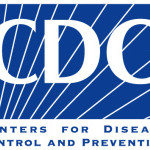- Sektör: Government
- Number of terms: 6326
- Number of blossaries: 0
- Company Profile:
Having symptoms that may indicate the presence of TB or another disease (see Asymptomatic).
Industry:Health care
A particular episode of clinically active TB. This term should be used only to refer to the disease itself, not the patient with the disease. By law, cases of TB must be reported to the local health department.
Industry:Health care
A condition in which living tubercle bacilli are present in the body but the disease is not clinically active. Infected persons usually have positive tuberculin reactions, but they have no symptoms related to the infection and are not infectious. However, infected persons remain at lifelong risk for developing disease unless preventive therapy is given.
Industry:Health care
The spread of an infectious agent from one person to another. The likelihood of transmission is directly related to the duration and intensity of exposure to M. tuberculosis (see Exposure).
Industry:Health care
TB disease in patients who do not respond to chemotherapy and in patients whose disease worsens after having improved initially.
Industry:Health care
A method used to evaluate the likelihood that a person is infected with M. tuberculosis. A small dose of PPD-tuberculin is injected just beneath the surface of the skin, and the area is examined 48-72 hours after the injection. A reaction is measured according to the size of the induration. The classification of a reaction as positive or negative depends on the patient's medical history and various risk factors (see Mantoux test, PPD test).
Industry:Health care
A clinically active, symptomatic disease caused by an organism in the M. tuberculosis complex (usually M. tuberculosis or, rarely, M. bovis or M. africanum).
Industry:Health care
A procedure used for the baseline testing of persons who will periodically receive tuberculin skin tests (e.g., HCWs) to reduce the likelihood of mistaking a boosted reaction for a new infection. If the initial tuberculin-test result is classified as negative, a second test is repeated 1-3 weeks later. If the reaction to the second test is positive, it probably represents a boosted reaction. If the second test result is also negative, the person is classified as not infected. A positive reaction to a subsequent test would indicate new infection (i.e., a skin-test conversion) in such a person. Ultraviolet germicidal irradiation (UVGI) The use of ultraviolet radiation to kill or inactivate microorganisms. Ultraviolet germicidal irradiation (UVGI) lamps Lamps that kill or inactivate microorganisms by emitting ultraviolet germicidal radiation, predominantly at a wavelength of 254 nm (intermediate light waves between visible light and X-rays). UVGI lamps can be used in ceiling or wall fixtures or within air ducts of ventilation systems.
Industry:Health care
The use of ultraviolet radiation to kill or inactivate microorganisms.
Industry:Health care
